The traditional perception of preschool speech therapy often conjures images of children sitting quietly at tables during structured sessions, but this conventional approach fundamentally misunderstands how young minds actually absorb language concepts. Through years of working with preschoolers who struggle with articulation and communication challenges, the most profound development occurs when therapy becomes indistinguishable from natural play. Students in this age group learn best through movement, sensory exploration, and interactive experiences that challenge the static model of speech intervention.
Rather than forcing young children to conform to adult expectations of focused attention, effective preschool speech therapy leverages their innate curiosity about toys, music, and hands-on activities to create engaging learning environments where goals are achieved through seemingly spontaneous fun.What distinguishes transformative speech intervention from routine clinical practice lies in understanding that preschoolers naturally integrate motor skills, social interaction, and language processing simultaneously during unstructured play scenarios. The most successful therapy involve children who don’t realize they’re working on target sounds or expanding their vocabulary because the activities feel like genuine exploration rather than prescribed exercises.
Preschool speech therapy becomes remarkably effective when families and parents recognize that home environments offer countless opportunities for practice without formal instruction – from cooking meals together to reading books during bath time. This approach transforms speech challenges from obstacles into adventures, where young minds discover that communication skills emerge naturally through engaging experiences rather than through repetitive drills or artificial games.
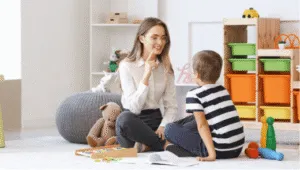
Tips for Engaging Preschoolers in Speech Therapy
Preschool speech therapy becomes remarkably effective when therapists understand that little bodies need to move during sessions. Rather than forcing children to sit in traditional classroom settings, successful intervention incorporates movement activities like yoga, dance, and obstacle course challenges that naturally target core vocabulary while keeping young children motivated. Speech-language pathologists who incorporate sensory play with materials like rice, beans, playdough, and Theraputty create rich environments for exploration where preschoolers can practice articulation skills through hide-and-seek games, animal sounds, and cause-and-effect toys like Pop-Up Pals and bubbles.
The key strategy involves pairing speech therapy activities with hands-on experiences that enhance engagement – whether using picture books, board games like Chutes and Ladders, or interactive storytelling with puppets and familiar objects.Online speech therapy for child services has revolutionized how families access care, particularly when parents integrate daily routines like bath time, snack preparation, and cleaning up into practice opportunities. Preschool speech therapy sessions work best when caregivers understand that children learn through play – building with blocks, pretend play with farm animals, turn-taking games, and simple following directions activities all support expressive and receptive language development.
Speech-language pathologists recommend selecting toys that encourage communication without being distracting – Mr. Potato Head for body parts vocabulary, stacking cups for spatial concepts, and card games like Uno for memory and matching skills. The most effective preschool speech therapy approaches involve collaboration between therapists, parents, and teachers to ensure goals are practiced across environments, helping preschoolers develop strong communication abilities that predict later academic success in reading, writing, and social interactions. Regular assessment and positive reinforcement during these engaging activities helps address articulation, phonology, weak syllable deletion, and expressive language challenges while making preschool speech therapy an enjoyable experience that builds confidence and readiness for kindergarten.
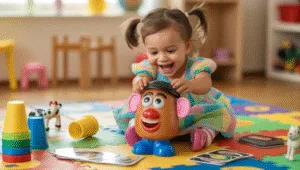
Movement Activities for Speech Therapy
Movement-based approaches in preschool speech therapy create dynamic environments where children naturally engage their motor skills while targeting language development. Rather than expecting students to sit still on the floor for entire sessions, SLPs can incorporate activities that leverage a child’s natural curiosity and playfulness. Bean bag toss games allow kids to practice sounds while throwing, and simple dancing to nursery rhymes like “Head Shoulders Knees Toes” helps teach body parts vocabulary. When a kid can go to therapy while at school, these movement activities make the experience more enjoyable and less intimidating than traditional approaches.
Preschool speech therapy sessions become more effective when children move around the room, hide behind chairs, or crawl under tables while working on spatial concepts like “in,” “on,” and “behind.”Sensory play experiences offer exciting ways to enhance fine motor development while addressing speech goals during preschool speech therapy. Dough smash mats provide tactile stimulation as children practice articulation patterns, and fidget toys keep hands busy during longer storytelling activities.
Threading activities with colorful pasta or oats in containers encourage turn-taking while expanding phrases like “put it on top.” Preschool speech therapy becomes more engaging when therapists create treasure hunts where children search for picture cards hidden throughout the therapy room. These approaches not only motivate young learners but also help them associate positive emotions with communication practice, making each session an adventure rather than a chore.
Sensory Play Ideas for Speech Therapy
When incorporating sensory activities into preschool speech therapy, engaging ways to enhance communication abilities include creative movement exercises that encourage physical exploration. Toss and roll a ball back and forth while targeting specific sounds, hide picture cards in different textures for scavenger hunt games, and use colorful objects that provide tactile feedback during articulation practice. Preschool speech therapy sessions become more effective when children can engage their hands through play activities like stuffing toys into containers, flipping cards upside down for memory games, and creating adventures using sensory bins filled with rice or beans.
Magnetic building tiles offer opportunities to work on following directions while developing fine motor skills, and preschool speech therapy goals can be addressed through simple crafts that involve drawing, coloring, and describing their creations. While traditional approaches focus on verbal exercises, some families exploring comprehensive treatment options may also consider stem cell therapy for autistic child interventions alongside speech services.Preschool speech therapy benefits significantly from sensory play ideas that combine cognitive and physical challenges through interactive experiences.
Students can practice turn-taking skills by pressing buttons on pop-up toys, watching balls roll down chutes while expanding phrases, and using musical instruments like piano keys to work on early sounds and rhythm. Threading activities with wooden lacing toys help children request assistance using longer sentences, while pretending to feed toy monsters encourages imitation of animal sounds like moo, baa, and neigh. Visual aids and picture schedules support comprehension during these hands-on activities, making learning enjoyable while addressing individual needs in group settings. Sensory play provides a natural context for developing social communication skills, emotional regulation, and language structures essential for future academic success.
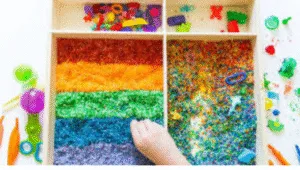
Board Games and Games for Speech Therapy
Card games such as Go Fish and Old Maid provide a fantastic way to target many speech goals while children take turns flipping cards until they match all their pairs. These readily available games from retailers contain a wide variety of sounds, particularly beneficial for preschool speech therapy, whether targeting G, F, or SH sounds through winning and losing scenarios that keep young players engaged. During today’s sessions, pathologists find that 4 easy games you likely already have can be adapted – just get some trash cans with flippable lids or decorate any sort of box lying around my office whenever needed for preschool speech therapy.
Movement–based games like hopscotch offer opportunities to combine child therapy vestibular sensory activities with speech goals, as students hop around the room while trying to imitate sounds or complete suggested tasks. Simon says games help maintain attention while working on two–step instructions, and pretend play scenarios where children waddle like ducks or slither like snakes make preschool speech therapy sessions more exciting. Beat the dice games provide much–needed brain breaks between articulation drills, particularly effective for preschoolers who struggle to sit still during traditional preschool speech therapy approaches.
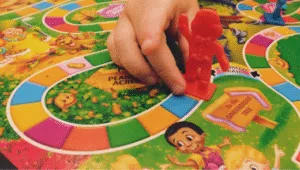
Picture Books and Storytelling for Speech Therapy
Yummy, Yucky by Leslie Patricelli and Little Blue Truck by Alice Schertle represent more than simple children’s books – they become powerful tools for preschool speech therapy when pathologists realize the versatile method these narratives offering. While some may still listen to stories without that ability to participate, valuable source materials feature challenging vocabulary enhancing imaginative thinking. Talk with Me Big Book of Exclamations by Teri Peterson could also become a great addition when fostering expressive language through specific sound production activities.
The Bill Cotter listed works particularly love offering receptive engagement yet simultaneously building foundation skills.Storytelling activities for preschool speech therapy involve much excitement when therapists include movement and action characters during narratives. Pictures from magazines newspapers serve this purpose well – describe how characters feel about what happens next, creating role-play stories that cater to high levels of participation.
Preschool speech therapy sessions become truly engaging when children can pick details from multiple sources, making each story funnier and wilder than traditional read-aloud books. School-age narrative ability develops when preschoolers tell their own story in order with detail, using dice available in stores online to stage naming place and character elements. This holistic approach to preschool speech therapy helps struggling students learn concepts about sentence formation while playing.
Storytelling Activities
Storytelling activities in preschool speech therapy revolutionize traditional intervention when therapists realize that children respond better to narratives that break conventional rules. Rather than simply reading picture books like “Yummy Yucky” by Leslie Patricelli or “Little Blue Truck” by Alice Schertle and Bill Cotter, effective practitioners encourage preschoolers to become active storytellers themselves by hiding physical-therapist-approved-baby-toys within imaginative scenarios.
Children with expressive language delays often struggle when asked to listen passively, but thrive when given opportunities to manipulate objects like Magna-Tiles or Potato Head while creating their own versions of familiar tales. Speech-language pathologists report that preschool speech therapy sessions yield better results when storytelling combines movement activities – children standing up, imitating characters, or using their hands to demonstrate actions rather than sitting still during book time.
Preschool speech therapy transforms when storytelling activities target specific articulation challenges through carefully selected narratives that feature problematic sounds naturally embedded within engaging plots. Therapists working with children diagnosed with Childhood Apraxia of Speech (CAS), Down syndrome, or Autism spectrum disorder find that books like “Talk with Me” Big Book of Exclamations by Teri Peterson offer versatile tools for fostering communication growth through repetitive practice disguised as play.
Parents learn to adapt bedtime stories into therapeutic opportunities by pausing during key moments, asking children to fill in missing words, or encouraging them to retell events using visual aids and props. Preschool speech therapy effectiveness increases dramatically when families understand that storytelling activities should emphasize interaction over passive consumption – making narratives come alive through joint attention, turn-taking, and collaborative meaning-making that addresses both receptive and expressive language goals while building crucial social communication skills.
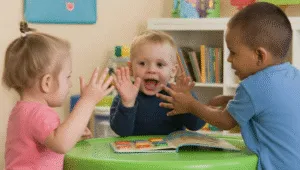
Music and Songs for Speech Therapy
Music and songs offer a valuable method for enhancing preschool speech therapy sessions, particularly when targeting specific phonological processes and articulation challenges. Each child’s developmental milestones may vary, but nursery rhymes like “Itsy Bitsy Spider” provide excellent opportunities for practicing multisyllabic words and improving pronunciation clarity. Preschool speech therapy specialists have found that combining movement with musical activities helps children remember correct production patterns more easily. Interactive songs encourage participation and allow therapists to address expressive language delays while keeping sessions engaging and fun.
Successfully implementing music-based interventions in preschool speech therapy requires careful planning and consideration of each child’s specific needs. Simple songs with repetitive lyrics help children practice following multi-step instructions and improve receptive language skills, particularly for those struggling with comprehension. Preschool speech therapy sessions become more effective when therapists use familiar melodies to teach new vocabulary and promote better communication abilities. Musical activities also support social interaction development, helping children express thoughts and feelings more clearly while building confidence in their ability to communicate with peers and adults.
Toys for Preschool Speech Therapy
When initiating preschool speech therapy, toys become crucial tools for helping children engage during sessions. Interactive play with educational toys encourages expression while children explore different textures and colors through sensory bins filled with shredded paper or sand. Legos offer perfect opportunities for requesting and joint attention, while puzzle games teach sequencing skills as children follow instructions to complete tasks. Visual aids such as picture books support vocabulary building, and singing toys strengthen articulation skills through repetitive practice.
Preschool speech therapy becomes more engaging when children play with toys that promote meaningful conversations and help them express feelings.Movement toys linked to exercise improve motor planning while supporting language development in preschool speech therapy. Children struggling with apraxia benefit from toys that encourage mouth movements and breathing exercises. Simple games using minimal pairs help children produce sounds accurately, while themed worksheets and carrier phrases assist production during structured activities.
Preschool speech therapy sessions become effective when toys align with specific goals set by the SLP. Whether addressing expressive or receptive language difficulties, toys provide the foundation for successful intervention and help children reach age-appropriate milestones in preschool speech therapy.
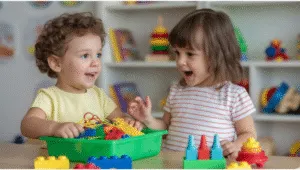
Speech Therapy Activities for Preschoolers
When pediatric SLP professionals consider early intervention strategies, there’s literally no better approach than combining motivating toys with structured activities. I’m intentionally listing these unique methods because every preschooler struggles with different challenges – some might have difficulty producing clear articulation, while others experience expressive language delays. Preschool speech therapy sessions should include magnetic building toys that foster imagination and interaction, especially when you’re targeting wh-questions and basic sequencing skills.
Fisher-price gumball dispenser toys allow little ones to hit, turn the key, then get objects – this type of trial and error play promotes following directions while building vocabulary naturally.Preschool speech therapy activities work best when they’re tailored to individual needs – if your caseload includes children with cerebral palsy or Developmental Delay, you’ll want sensory play ideas that expose them to new textures and environments. Mighty Kids Therapy emphasizes using clear plastic bins with various fillers to create mini worlds where preschoolers can practice expressing feelings and developing social communication.
Preschool speech therapy relies on establishing routines that reinforce learning – breaking tasks into logical steps helps children comprehend instructions better and reduces frustration periods. When planning your sessions, remember that preschool speech therapy success comes from making each activity enjoyable while targeting specific goals effectively
6 Specific Speech Therapy Activities for Preschoolers
Preschool speech therapy transforms when therapists integrate interactive play with sensory experiences that motivate little ones to engage. Picture books combined with storytelling activities help children develop expressive language skills while building vocabulary through visual aids and daily routine integration. Movement activities like hammer and ball games encourage articulation skills, while music and songs support receptive language development.
Preschool speech therapy sessions become more effective when incorporating toys such as wooden lacing apples or gumball dispensers that allow children to practice following directions and answering questions in a safe, comfortable environment.Home practice strategies reinforce preschool speech therapy goals through snack time conversations and phone interactions with family members.
Parents can support their child’s progress by modeling three-word sentences during playtime and encouraging expression of feelings through art activities. Preschool speech therapy benefits include improved social communication when children learn to identify signs of emotions and practice persuasion skills during structured play. Regular assessments ensure intervention effectiveness while addressing specific challenges like apraxia or language disorders that manifest in early childhood.
How Does Speech Therapy Benefit Preschoolers?
Preschool speech therapy fundamentally transforms how children navigate their critical developmental years by addressing articulation challenges that might otherwise lead to later academic struggles. When preschoolers engage in speech therapy, they experience improved communication abilities that extend far beyond simple pronunciation corrections. The intervention creates a foundation for better social interactions through enhanced language skills, allowing children to communicate effectively with adults and peers.
Preschool speech therapy activities specifically target expressive and receptive language difficulties, ensuring children can both understand and convey their thoughts with appropriate grammar and clarity.The benefits of preschool speech therapy extend into enhanced academic readiness as children develop crucial skills needed for kindergarten success. Through targeted practice, preschoolers build vocabulary, learn to follow directions, and master sequencing skills that directly impact their ability to succeed in school settings.
Social communication improvements occur naturally as children gain confidence in expressing feelings and engaging in conversations. Preschool speech therapy also supports persuasion skills and social skills development, creating opportunities for children to participate actively in group activities and form meaningful relationships that will benefit them throughout their lifespan.
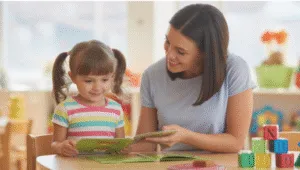
What Activities Can Make Speech Therapy More Engaging for My Child?
Beginning with preschool speech therapy often makes parent and caregiver wonder how best to get their younger child engaged in activities that will assist learning without feeling intimidating or challenging. From my personal experience, the most effective approach includes playing games like “Where’s Waldo” searches across table top scenes, which naturally increases utterances when you ask “where did you find them?” behind the curtain or under the chair. Toys such as Wooden Lacing Apple Threading Toy become surprisingly motivating for articulation when the worm goes through holes — they produce words consistently because they’re excited about the movement.
Preschool speech therapy typically works best through interactive playtime adapted for whatever the child loves, whether that’s building a tower together or using mini mats with cow eating and duck flying examples to practice pronouns (he, she, his, hers).When starting preschool speech therapy, setting up a routine within daily contexts reinforces strategies so understanding improves easily.
I always recommend integration of music during transitions – nursery rhyme like “Row Your Boat” or the “Wheels on the Bus” engages brain areas linked to processing spoken language and supports preschool speech therapy goals without needing store-bought resources. One vital activity involves meal time naming ingredients while giving simple directions (first wash hands, then get the bowl), which contains lots of opportunities to expand vocabulary and sequence steps throughout the day.
Even sensory bin exploration with things like snake or Ball Dispenser Toy provides an environment where conversation flows naturally – you can talk about color, function, similarities, and differences while trying to construct complete ideas. The key is intentional praise and providing prompts that ease participation rather than push too hard, ensuring the child stays looking forward to each preschool speech therapy session or home practice moment.
What Signs Indicate My Preschooler May Need Speech Therapy?
Identification of challenges happens by getting attuned to moments when your child shows trouble speaking during routines – whether participating in activities at house gatherings or struggling to communicate with others. You might look for signs like being difficult to understand by ages three, showing hesitant attempts at forming words, or having limited vocabulary. Issues with articulation – how sounds are pronounced and understood – become apparent when others consistently ask your child to repeat themselves. Some who struggle with expressive language might also have trouble following directions, which affects their day-to-day engagement and participation.
Challenges with receptive language – the ability to grasp meaning of words used by others – can present as confusion during simple tasks. When social communication breakdowns occur, children experience difficulty with turn-taking, greetings, or understanding social cues. These signs suggest preschool speech therapy could benefit your child significantly.Worried about your child’s development? It’s important not to be hesitant – consult your pediatrician for a referral to a professional who can provide proper assessment. Early preschool speech therapy has shown effectiveness, especially when issues are identified in a timely manner.
Taking initial steps toward seeking preschool speech therapy ensures your family gets the right support. Need guidance about getting started? Consult a speech-language pathologist who can outline an Individualized Education Plan (IEP) once evaluation is finalized. Parents worried about communication delays shouldn’t wait – it makes a substantial difference when intervention begins early. Professional support provides your family with practical resources and tools for helping your child develop stronger communication abilities, and preschool speech therapy creates vital foundations for future academic success.
Frequently Asked Questions About Preschool Speech Therapy
Can therapy work if my child won’t sit still during sessions?
Good news – moving helps. Many SLPs now use active game activities like slide, run, or circle time rather than completing tasks in a chair, and this method provides better results after 8 sessions.
What if the diagnosis doesn’t feel right?
Don’t hesitate to seek another evaluation, especially if you live in Texas, Massachusetts, Rhode Island, New Hampshire, or Coral Springs where expedited telehealth is available. Monitoring ensures the intervention’s plan aligns with realistic targets through collaborating with professionals.
Do I need expensive toys for speech practice?
Definitely not – everyday items work best. A classic Pound & Roll, popper, Pig counting set, or press Button books suit speech needs without batteries. Choose what’s already in your collection and use them during routine activities like getting dressed or bathtime.
Should I wait until formal education starts?
Please start early – shown to increase likelihood of successful outcomes. Once evaluation is done, the SLP outlines an addition to your daily routine. Therefore, don’t delay – beginning now creates a precursor for education readiness and prevents bigger challenges later.
How can I make practice feel natural?
Engagement happens through play, not drills. Use Alphabet Song, read picture books, ask questions about events, and encourage describing items during meals. Including sensory elements like draw, shape playdough, or turning tasks into games allows words to flow naturally instead of feeling like work.
